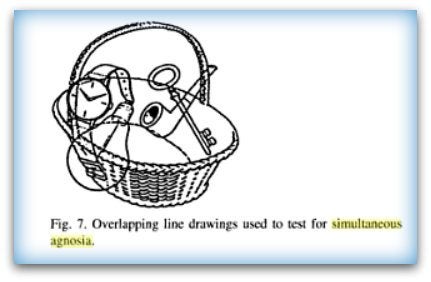Agnosia

Agnosia
Agnosia is the inability to recognize things (objects, faces, voices, places, images, sounds, smells) observed through the senses (eyes, ears, nose, mouth, touch). It is a rare neurological disorder that may be caused by a stroke, a head trauma or encephalitis, dementia, carbon monoxide poisoning and anoxia. People with agnosia can still think, speak, and interact with the world around them in a normal way.
The word is derived from the Greek agnosia ἀγνωσία agnosia = ignorance or without knowledge.
The most common forms are visual- (seeing), and auditory-(hearing) agnosia, but the condition can also occur with the other senses. The senses themselves are still intact and there is no loss of memory. Agnosia is usually limited to one sense, a single information pathway in the brain. For example, people with visual agnosia won’t be able to name an object placed in front of them or describe its use. But they will still be able to reach for it and pick it up. Once they are holding the object, they will be able to use their tactile information pathway—their sense of touch—to identify its use.
| A woman wakes up in a room that she cannot remember. She sees an object over her head, it is hanging on the ceiling and she does not know what it is. She looks to the left and sees a man sitting besides her. She does not recognize him. The man explains that he is her husband and the object seems to be a television. The woman is in a hospital after a stroke, she has a loss of recognizing; agnosia, due to her brain damage. |
Someone may hear a ringing phone, but not recognize the signal as a request for communication. (auditory agnosia) On the other hand he can respond to a phone signal, but does not recognize the phone as the specific object that he has to use. (Visual agnosia).
If someone for instance is offered a cup of hot tea and he does not recognize it as hot, he can get hurt or burned.
The difference with apraxia is that in the case of apraxia the objects are detected well, but knowledge about its use has disappeared. See page apraxia.
In the book 'The Man Who Mistook His Wife for a Hat', American neurologist Oliver Sacks describes a number of cases of agnosia.

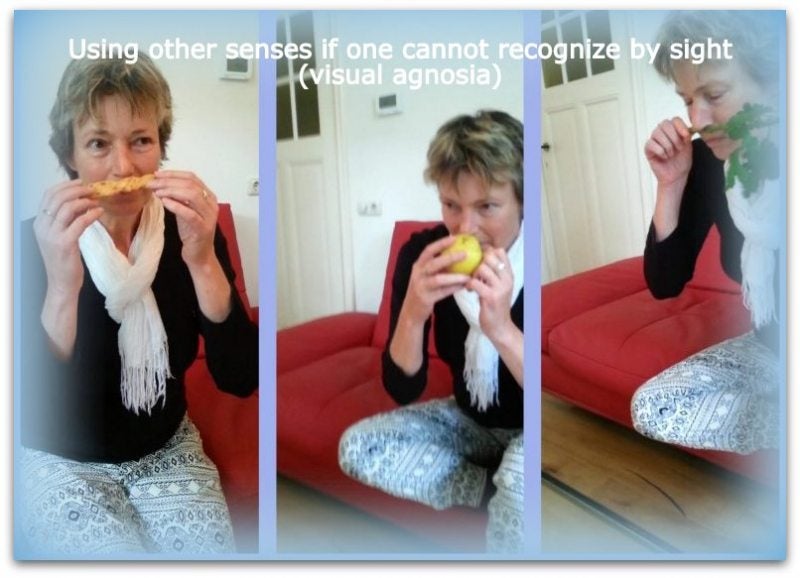
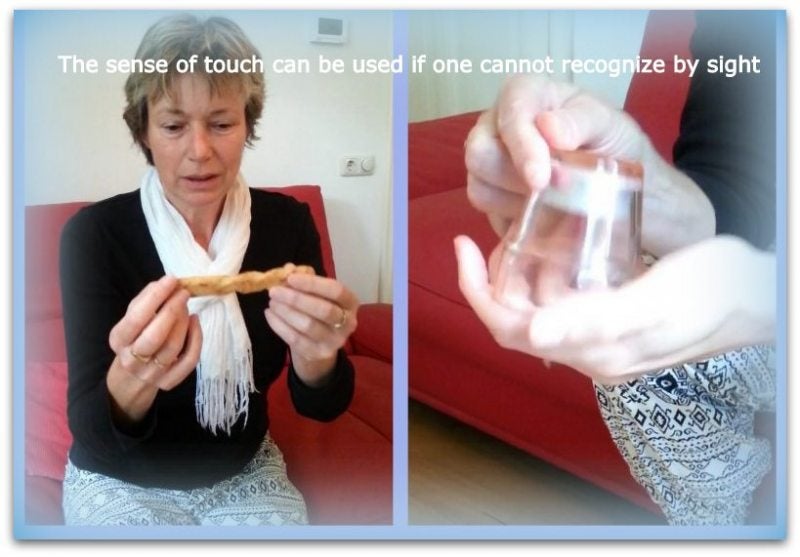
There are various specific forms of agnosia, such as problems with recognizing colors, shapes, texts, bodyparts, music or certain objects.
- Auditory agnosia ( -Auditory agnosia
One hear sounds but can not name where they belong to. Eg. omeone hears the phone ringing but did not pick up the phone because he does not recognize the sound of the phone.)
- Olfactory agnosia (Smell agnosia, Fragrances are nog recognized. Eg. someone does not recognize the smell of gas and will not turn of the gas)
- Stereognosia (-Stereognosia Someone can not recognize an object purely by touch, but does recognize when he sees the object or hear it.)
- Somatoagnosie ( -Somato-agnosia Someone does not recognize own body parts. For example, someone does not recognize his own own hand or not his crippled leg and wants to throw it out of bed.)
- Visual agnosia:
- Apperceptieve agnosia
Apperceptieve agnosia is associated with problems in seeing, such as combining parts of a figure to build up to a whole. However seeing color, movement, sharpness is intact.
Patients often have trouble recognizing or copying simple objects like keys, numbers, squares and circles. Apperceptieve agnosia seems mainly caused by damage to the visual cortex.
- Associative agnosia In associative agnosia the recognition of simple objects is intact, but someone can not visualize this in his thoughts, as drawing a house.
Also, there are problems with recognizing incomplete or distorted figures, or one confuses objects with a similar shape, like an oar and a bat.
- Prosopagnosia face blindness, is the inability to recognize faces (even from people you know) Sometimes a face is not even recognized as such. Sometimes omeone can still be recognized by voice or by a typical run. This problem is based on a lesion in the windings: fusiform gyrus in the brains.This phenomenon can also occur if there is no brain damage, but a psychiatric disorder; syndrome of Cargas
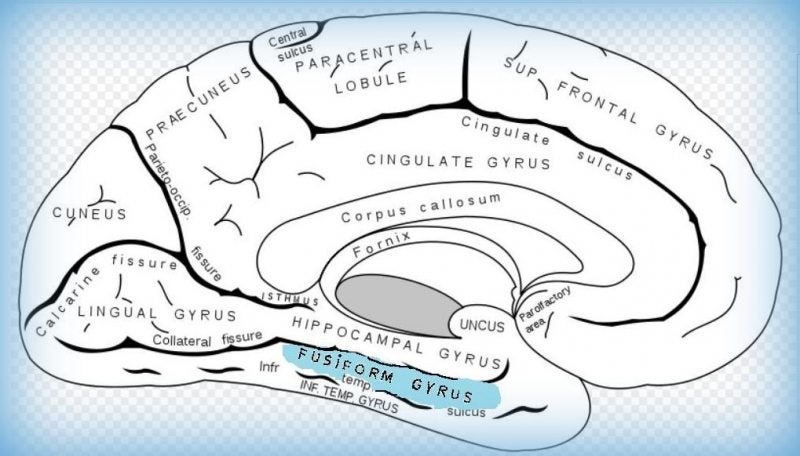
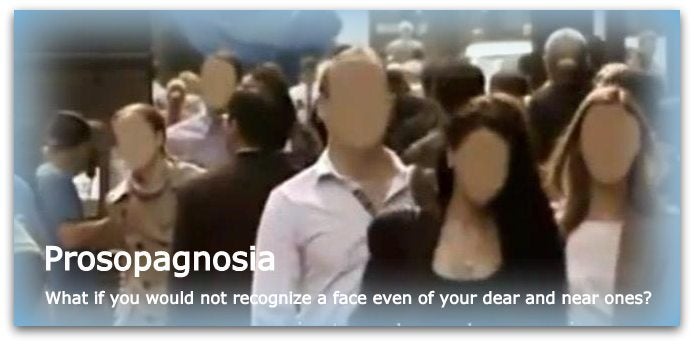
- Simultanagnosia / Simultaneous agnosia
|
Simultanagnosia: the inability of an individual to perceive more than a single object at a time. This type of visual attention problem is one of three major components (the others being optic ataxia and optic apraxia) of Bálint’s syndrome, an uncommon and incompletely understood variety of severe neuropsychological impairments involving space representation (visuospatial processing). The most common cause of this simultanagnosia, is a cerebral hemorrhage in the right parietal lobe. Sometimes simultanagnosia is observed after two-sided parietal lesions. There are two different subtypes of simultanagnosia: |
|
|
Two videos on visual agnosia:
Read more: Neurocase: The Neural Basis of Cognition
Resources: http://www.healthline.com/symptom/agnosia , http://cirrie.buffalo.edu/encyclopedia/en/article/290/
handbook of neuropschychology disorders of visual behavior page 128, http://www.healthline.com/symptom/agnosia
